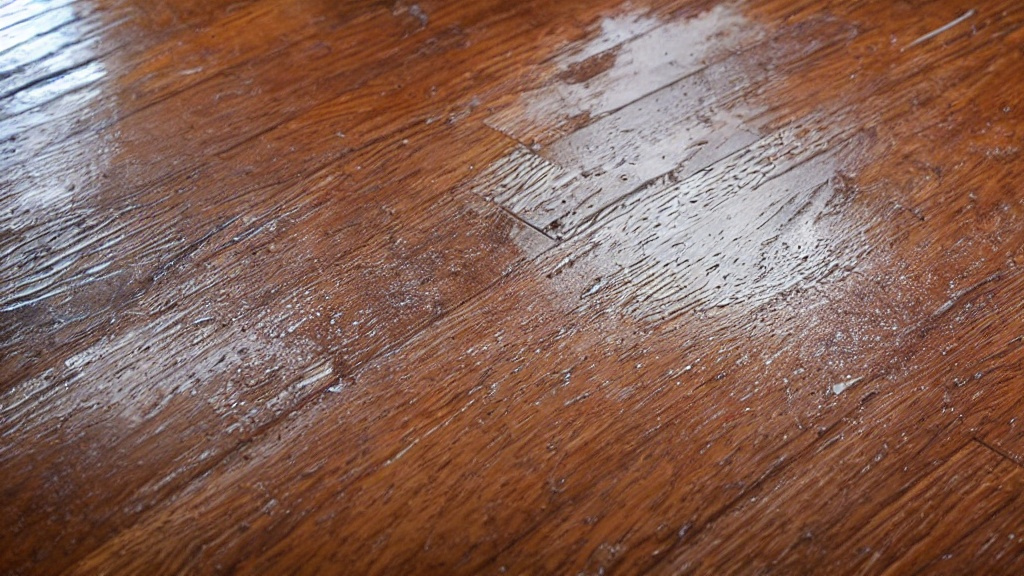Water damage can wreak havoc on the pristine beauty of hardwood floors, whether it’s from a burst pipe, a leaky appliance, or a natural disaster. The sight of warped wood and bubbling surfaces can be distressing, but fear not! With the right approach and timely intervention, you can salvage your beloved wood floor and restore it to its former glory. In this comprehensive guide, we’ll walk you through the step-by-step process of fixing wood floors damaged by water, ensuring a successful restoration project.
Assessing the Damage: Signs to Look For
Before diving into the repair process, it’s crucial to assess the extent of the water damage. Keep an eye out for the following telltale signs:
1. Warped or Bubbled-Looking Wood
When wood absorbs water, it swells, leading to warping and bubbling on the surface. Look for abnormalities such as curling edges or peeling, indicating significant moisture saturation.
2. Stains
Water stains are visible evidence of prolonged exposure to moisture. These discolorations can range from faint outlines to prominent marks, signaling water accumulation on the surface of the floor.
3. Squishy Feeling Underfoot
A soggy or squishy sensation when walking across the floor suggests structural damage underneath the surface. This could be a result of water seepage or absorption, compromising the integrity of the flooring.
4. Musty Odor
The presence of a musty odor, akin to mold or mildew, hints at moisture infiltration within the floorboards. Mold growth can pose health risks and further deteriorate the wood if left unchecked.
Also Read: Water Damage Austin: Protecting Homes and Businesses in Central Texas
Step 1: Act Swiftly
Upon detecting signs of water damage, swift action is paramount to prevent further deterioration. Delaying repairs can exacerbate the problem, potentially necessitating costly replacements. Here’s what you should do:
Wipe Up Excess Water
Begin by removing any standing water using towels or a mop. Prompt removal of moisture minimizes absorption and mitigates the risk of mold growth.
Step 2: Thorough Drying Process
Proper drying is crucial to prevent mold growth and structural issues. Follow these steps to ensure thorough drying:
Utilize Dehumidifiers
Deploy commercial-grade dehumidifiers to extract moisture from the air and accelerate the drying process. Run the dehumidifiers for at least 48 hours to achieve optimal results.
Enhance Ventilation
Open windows and doors to facilitate air circulation and promote evaporation. Position industrial-size fans strategically to expedite drying and dissipate trapped moisture.
Monitor Moisture Levels
Regularly monitor moisture levels using specialized equipment to gauge progress. Aim to achieve equilibrium moisture content (EMC) comparable to unaffected areas, indicating thorough drying.
Step 3: Structural Assessment and Repairs
Once the floor is adequately dried, assess the structural integrity and proceed with necessary repairs:
Inspect Subfloor and Underlayment
Examine the subfloor and underlayment for signs of water damage, such as rot or decay. Replace any compromised materials to ensure a stable foundation for the wood flooring.
Address Buckling and Warping
If the wood flooring exhibits buckling or warping, alleviate stress by removing select boards from the affected area. This allows for ventilation and facilitates the drying process.
Step 4: Restoration and Refinishing
With the underlying issues addressed, focus on restoring the aesthetics and functionality of the wood floor:
Replace Damaged Boards
Replace any irreparable boards with matching replacements, ensuring a seamless transition between old and new flooring.
Sanding and Refinishing
Sand down the surface to remove imperfections and restore smoothness. Apply a protective sealant or finish to enhance durability and aesthetics.
Step 5: Preventive Measures
To safeguard against future water damage, implement preventive measures:
Sealant Application
Apply a high-quality sealant to protect the wood from moisture infiltration and prolong its lifespan. Regular reapplication of sealant is recommended to maintain effectiveness.
Maintain Vigilance
Stay vigilant for potential sources of water damage, such as leaks or plumbing issues, and address them promptly to prevent recurrence.

Also Read: Water Damage to Wood Floors: Understanding the Risks and Solutions
Conclusion
In conclusion, repairing water-damaged wood floors requires prompt action, thorough drying, and meticulous repairs. By following the steps outlined in this guide and remaining proactive in maintenance, you can preserve the timeless beauty of hardwood floors for years to come. Remember, prevention is key to safeguarding your investment and enjoying the elegance of wood flooring for generations.










